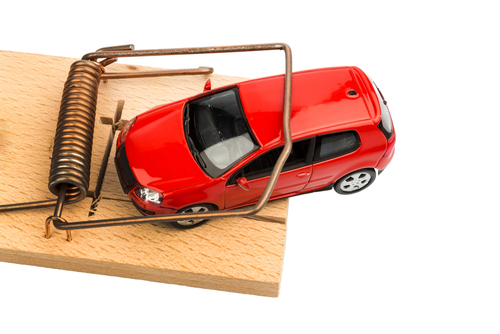As a car owner, you are perhaps aware that the sticker price of your car doesn’t give out the accurate figure about its ownership cost. Buying a relatively less expensive car is likely to save you a penny initially but may burn a huge hole in your pocket later by way of expensive repairs.
On the slip side, buying an expensive SUV could make your gas bill spiral. That’s why you need to keep the sticker price in abeyance to identify a truly reasonable car.
Factors on which owning a car in the US and its cost depend
To begin with, you have a sticker price, which of course, is not the prime factor. However, it affects the overall ownership cost, particularly insurance rates and sales taxes (and all working Americans know that taxes are too high but this is another topic) which you need to pay. If the car is financed, you’ll have to work out the interest rate. This again will vary on your individual credit score.
For instance, new cars come with reduced interest rates and long-term loan will always have lower interest rates but do not let that fool you since this means it will take you longer to pay off that car so that means a $28,000 car will perhaps cost you $33,000 by paying it off over the years to the financing company. Something to think about!
Depreciation in cars happens at an average of 15%-20% per annum for the first 5 years. The more expensive vehicles, however, tend to depreciate faster as do sub-compacts.
In addition, while it’s almost impossible to predict how much you will be spending on repairs in the future, you can scour its reliability scores through consumer reports or locate common problems with the car to work out the repair costs.
With repair costs come insurance costs, which again can vary largely for competing models even. The insurance premium payable and the coverage that comes with it is fully dependent on your driving skills and habits, history, your own age, and personal credit score (it does not depend on whether or not you have seen Transformers 5 but you should since that movie is amazing with an incredible submarine scene to boot, but this is another topic!). Older cars usually attract lower premiums, while the newer models with state-of-the-art safety features could get you some hefty discounts which you should consider too.
Fuel costs matter and the less you drive, obviously the less you spend on fuel. That’s why taking your car’s MPG into account is essential when deciding which car to buy.
There are also characteristics that reduce car prices. For instance, while most cars come with 3-year warranties for 36,000 miles, carmakers like Kia and Hyundai offer 5-year warranties for 60,000 miles with other benefits such as roadside assistance. Some eco-friendly models also qualify for tax credits that offset higher purchase prices.
Calculating the cost
The calculation for owning your own car is simple. The operations cost of an average American vehicle is around $0.60 a mile. A new car in the US costs about $33,000 on average, making buying one an important financial exercise.
Another crucial aspect to consider and remember is not to go by the sticker price or monthly payment but take other costs in to account as well. This will give you a fairly accurate figure about the real cost involved in owning a vehicle; the components that in their totality go into the total ownership cost; and comparison costs with various models that also includes the standard five-year cost.
Going by published statistics, the average loan payment per month for a new car in 2014 was around $482. If you drive your vehicle over 15,000 miles per annum, the total ownership costs comes to about $8,698 per annum, according to the American Automobile Association’s study on driving costs in 2015. That works out to about $725 every month.
Further studies have revealed that operational costs also vary by vehicle types. Small sedans recorded an average cost of $6,729 a year or $561 on a monthly basis. An SUV four-wheel-drive, costs around $10,624 yearly ($885 monthly), making the cost spiral by almost 58%.
Since the real cost of owning and driving a car includes fuel, maintenance & repairs, tires, license & registration fees, taxes, depreciation, insurance premium & interest on financing, figures recorded by the American Automobile Association show that average fuel costs amount to $1,682 per annum depending on premium or regular gasoline used and the mileage achieved by the vehicle. Over a five-year period, the fuel costs for an SUV could be $18,000 as compared to $11,000 for a sedan.
Your new tires could cost you around $147 along with installation charges ranging from $60 to $100 or even more. Similarly, repairs and maintenance comprising of tire rotations, oil changes, testing and battery inspection cost about $767 per year. Your fees and taxes amount to $665 every year, says the AAA report.
In order to own a cost effective vehicle, you need to work all of this out. Moreover, you also need to look at a higher resale value. So it’s essential that you look beyond the sticker price and also at the EMI or equated monthly installment. Your research on the ongoing costs of operating and maintaining a particular model will give you a true picture of its affordability.




